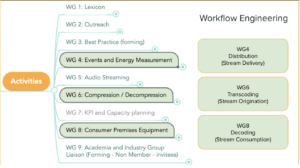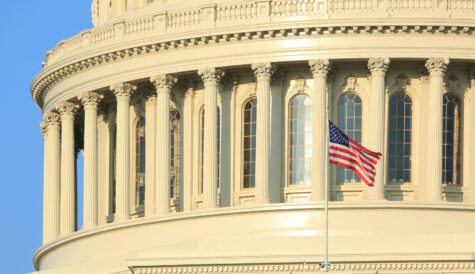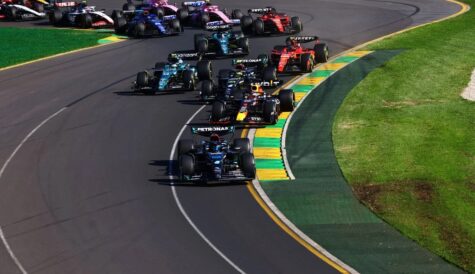Video workflow engineering and sustainability: a primer
In the first of a regular series of articles on sustainability in the video space, Dom Robinson, founder of Greening of Streaming, seeks to separate myth and reality in relation to green video workflows.
 Digital TV Europe has invited me to contribute a regular column to help readers develop more awareness about issues concerning sustainability of our industry.
Digital TV Europe has invited me to contribute a regular column to help readers develop more awareness about issues concerning sustainability of our industry.
Why me? Principally because today I run an organisation I hope you may have already heard of called www.GreeningofStreaming.org. I have also been a practitioner in the live streaming, webcasting and CDN space for 30-plus years now (the first frame of video I collected over an IP network was in 1990, from a telescope pointing at a binary star system a dozen light-years away – that is proper ‘latency’!) and I have extensive experience in building live streaming workflows and CDNs since I also run a software company (id3as) that produces https://norsk.video .
The plug for my experience in the sector is useful to help you all understand that primarily I am a live streaming engineer, and not a tree hugger. In our community I find that an extremely useful thing to lay out up front, since when the word ‘sustainability’ appears in a technical context there are many of you who will just switch off. Some may feel ‘all this hippy talk’ is out of place in a technical, commercial world, or that ‘climate’ is an interchangeable word with ‘conspiracy’ (and yes there are a lot of such people out there).
So, let’s make it simple for everyone. Greening of Streaming is focused on energy efficiency in streaming workflows.
Some may like that because lower energy consumption leads to less demand on resources that they care about, while others like it because it makes their business more profitable.
(In this context, a word about carbon. Given that I can’t find anyone in the industry who actually knows what carbon is in their software-driven, intangible, telecoms-based world, focusing on carbon would be a huge distraction from the practical engineering that we actually work on today.)
Collaborative effort
So, sustainability may mean your business is eco-aware and sensitive to the general swing of the consumer – our customers – towards being minded that we should care about the world we live in. But sustainability also may mean you are able to return greater shareholder value for longer and prepare your business to be less reliant on problematic supply chains and resources.
For my part, I don’t much care. Both goals can be achieved through the same collaborative effort.
It is also worth noting that you can’t ‘win’ sustainability. Claiming in marketing material that you are greener than your competition is simply stupid, and I enjoy calling people out for it. The only way to ‘win’ sustainability is to work together. Otherwise, you might be the last company standing after the apocalypse but you will have no customers to sell to.
So at Greening of Streaming, it won’t surprise you to learn that we have one simple rule: ‘No Greenwashing.’ That means that other members will vote to remove your ‘badge’ if you publish unsubstantiated ‘green’ claims – and who better to take you to task on that than your direct competition. They invariably know your business better than any climate scientist or analyst. The interesting thing about this one rule is that it has fostered a culture of peer-review and collaboration that I have never before had the pleasure to work with across vendors in the industry over 30 years. I would venture that the informal, yet focused objective of the group has led us to a place that is perhaps more honest and open than even non-commercial academia is today.
I am hugely proud that we have, from our first couple of years of activity, now reached over 25 members and over 130 active individual participants from around the globe, actively collaborating on nine internal working groups and four ‘LESS Accord’ projects that involve a much wider group than just our membership.
So, what are we working on?
I won’t go into too much detail at this stage. I want to take deeper dives into each working group as this series progresses, but to set the scene here is a snapshot of the working group list:
 The light green groups are the ‘Pillar’ working groups. These three essentially encompass the main building blocks of a stream: encoding, distribution, and decoding. They are primarily concerned with initially agreeing an accord on measurement methodology in each domain (and boy, has that been a big discussion in each working group!) and as those models are put out into practical real-world environments, we are hoping to finally see what the systemic energy challenges are.
The light green groups are the ‘Pillar’ working groups. These three essentially encompass the main building blocks of a stream: encoding, distribution, and decoding. They are primarily concerned with initially agreeing an accord on measurement methodology in each domain (and boy, has that been a big discussion in each working group!) and as those models are put out into practical real-world environments, we are hoping to finally see what the systemic energy challenges are.
Streaming and energy consumption
You see, it’s certainly not as simply as ‘turn down the bandwidth and use less energy’. That thinking emerged from academia and accountancy groups who wanted to correlate the economic efficiency of reducing data transfer with energy to make their ESG reporting as simple as adding a new column to their spreadsheets.
As an engineering community, we all had doubts about that, and since it is largely our members who actually deliver those bits and bytes we were amazed at these claims when we ourselves (at the time) had absolutely no visibility of such a correlation; and these are our networks!
Indeed, today we firmly believe, and expect our at-scale, real-world testing to confirm, that ‘not sending data’ does not actually reduce any energy demand on the data networks, since the networks are powered for capacity, not for use. In simpler terms: your router in your home is on 24/7 regardless of whether you stream through it or not, and when you stream through it, if there is any energy variation at all that is related to the data traffic, then it is almost insignificant to the point that it is hard to measure at all.
This has upset a lot of digital media companies who think a ‘save the planet’ strategy simply means reducing the bitrate of their streams. It may save them money, but it is not saving the planet.
Such are the risks of trying to develop engineering strategy based on inexperience, conjecture and guesswork.
Our community entirely comprises engineers. We like to solve problems. The key problem is how to reduce the operational energy of streaming ecosystems. This doesn’t mean simply fixing the problem in your own silo. A good example of a reason why not is to think about encoding. Imagine an encoder vendor that simplifies its compression, reduces its encoders’ power consumption from 1kW to 0.5kW and markets itself as ‘twice as green’.
Without a full systemic view, this vendor might not discover that thanks to its change in strategy, 30 million set top boxes are working 5% harder, each consuming 5W more to decode the stream. 30 million times 5W is 150MW added to the electricity grid demand.
So a ‘green’ marketing strategy has removed 500W and added 150MW elsewhere. This is exactly the sort of inadvertent greenwashing claim that we are actively working together to avoid.
Do reach out if you want to know more – there is an endless discussion to be had here. We are always interested in new members – particularly publishers, vendors, and operators (including telco/mobile/carrier and CDN).
Streaming may drive demand for as much as 3% of global electricity supply (reach out to me and I’ll explain how we derive this one statistic that we use now). Our aim is to make that under 2% by better engineering, education, and collaboration.
Get involved – email [email protected] – and watch out for this column if you want to learn more over the coming editions!
Dom Robinson is the founder of Greening of Streaming and chief business development officer of id3as.



